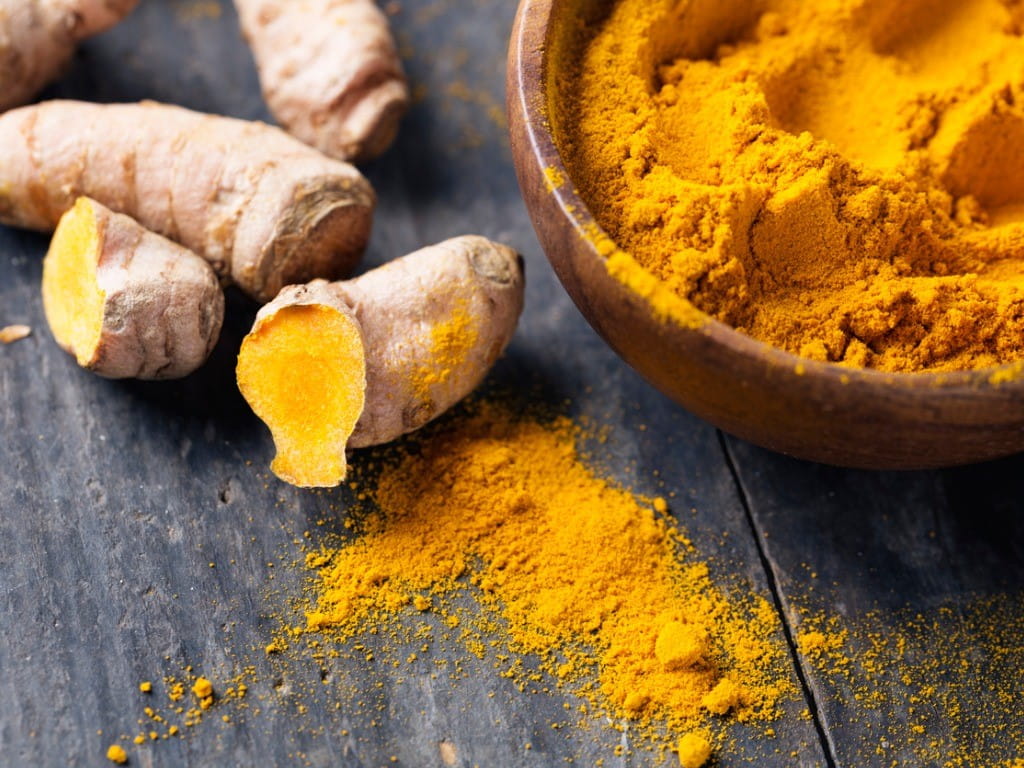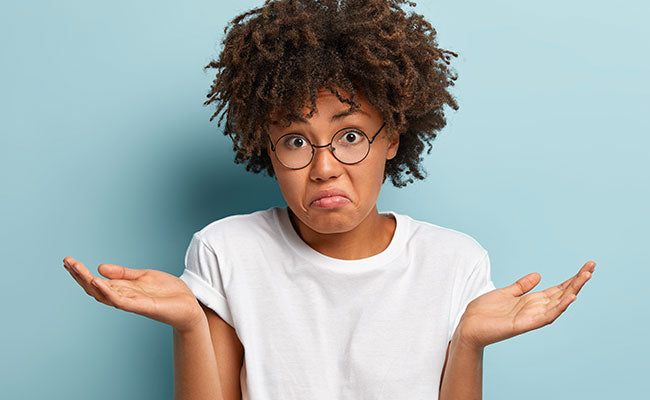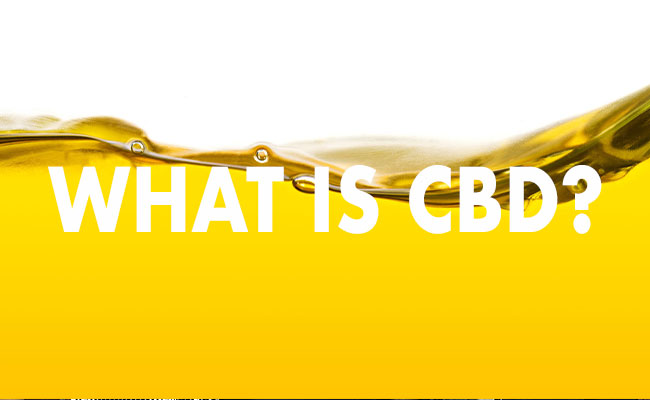
Curcumin 101
WRITTEN BY LAUREN KATAKOWSKI, MS AND DR. SWATHI
What is curcumin?
Turmeric has recently been all the rage from the medical and scientific, to the consumer worlds. The medicinal properties of turmeric are the source of curcumin and have been known and used for thousands of years.1 Curcumin (Curcuma longa) is the major bioactive component of the rhizomatous herbaceous perennial plant turmeric in the ginger family. Curcumin is widely used in Indian and Chinese medicine and also consumed in the Asian diet and is traditionally used for its medicinal and therapeutic properties. 2,3
What makes up curcumin?
The primary polyphenol (diferuloymethane) is the major component of the food flavoring of turmeric and has been reported to have anticarcinogenic, anti-inflammatory*, and antioxidant properties.4,5 Curcuminoids are approved by the US Food and Drug Administration (FDA) as “Generally Recognized as Safe” (GRAS). Tolerability of dosing and safety has been in clinical trials at doses of 4000 and 8000 mg/day and doses as high as 12,000 mg/day of 95% concentration of three curcuminoids: curcumin, bisemethoxycurcumin, and demethoxycurcumin.1,6,7 Curcumin, bisedemethoxycurcumin (BDMC), and demethoxycurcumin (DMC) are the three major chemical constituents of curcumin and exhibit the biological activities. BDMC and DMC also exhibit better stability and bioactivity than curcumin on its own.8
What's its mechanism of action?
Curcumins’ two primary mechanisms of action are its antioxidant and anti-inflammatory properties. These actions are mediated through its preventive and therapeutic ability to inhibit inflammatory molecules which explains its potential effects on various conditions such as conditions related to joints, muscles, weight, and exercise.. .9,10
What is piperine?
With all of its reported benefits, a major problem with ingesting curcumin has been its poor bioavailability. Several additives have been tested to improve bioavailability of curcumin, one of which being piperine. Piperine is the major active component of black pepper and has been associated with a 2000% increased bioavailability of curcumin.11,12 Another method that has been tested in the formulation of curcumin with biodegradable nanoparticles by emulsion technique. The curcumin is entrapped in the lipid particle and has demonstrated a 9-fold increase in oral bioavailability.13 Another promising approach to bioavailability is a phospholipid complex. Meriva is a patented phytosome complex of curcumin with soy phosphatidyl choline. Meriva has tremendously better absorption and total curcuminoid absorption was about 29 fold when examined in trials.14,15
Curcumin & the Endocannabinoid System
What is the endocannabinoid system?
The endocannabinoid system (ECS) has become a topic of discussion and has emerged as an important neuromodulatory system over the last 25 years. The ECS is composed of cannabinoids that the body makes or endogenous cannabinoids, cannabinoid receptors including CB1 and CB2 receptors and the enzymes responsible for making and breaking down endocannabinoids. The two most widely studied endogenous endocannabinoids are anandamide (AEA) and 2-arachidonoylglycerol (2-AG). 2-AG and AEA both mediate the activation of CB1 and CB2, but 2-AG favors CB2 receptors in the peripheral tissues. Both AEA and 2-AG are released on demand in the body, unlike dopamine or serotonin. The effects of endocannabinoids are mostly controlled by CB1 and CB2 cannabinoid receptors, the two most widely studied receptors. CB1 receptors are known for their role in the central nervous system and promoting wellbeing, and boosting cognition, while CB2 receptors are a part of the protective efforts of the immune system. CB1 receptors are found mostly in the brain and CB2 receptors are found often in immune cells.16 The ECS matters overall due to its link to the majority of the physiological processes of the body. The overall goal of the ECS is to promote and maintain homeostasis and balance in the body. 17
What is curcumin’s role in the endocannabinoid system?
Considering how the cannabinoid receptors (CB1 and CB2) affect mood and their distribution in the brain regions related to mood and reward, it has been proposed that the endocannabinoid system and its signaling pathway may be involved in the development of an overall decreased mood. There has been evidence in some studies of unexpected low mood with the siege of CB1 receptors. These observations have shown that the activation of CB1 receptors could result in similar behaviors and biochemical changes as those caused by antidepressants. Curcumin may have antidepressant potency through CB1 receptors and preliminary studies have suggested that they could increase ECS levels. More studies are needed, but curcumin has shown that it may play a role in optimizing and heightening mood across adult populations.18,19
Does curcumin work for joint inflammation and/or pain and discomfort?
There has been extensive research on the mechanisms by which persistent oxidative stress can lead to chronic inflammation. This in turn could cause many inflammatory diseases including but not limited to diseases of the heart, brain, lungs, and even diabetes. Oxidative stress disturbs the balance between the production of reactive oxygen species (ROS) or free radicals, and the antioxidant defenses. This imbalance can cause damage to important biomolecules and cells as well as the impact on the organisms. ROS plays a central role in the inflammatory response in both upstream and downstream pathways. There are numerous mechanisms by which curcumin can display anti-inflammatory activity including playing a role in alleviating oxidative stress by inflammatory pathways, suppression of pro-inflammatory pathways, and cell signaling. Due to its structure and antioxidant abilities, Curcumin may act as a natural free radical scavenger and decrease the release of different interleukins.22
Curcumin has been shown to interact with numerous different inflammatory molecular targets. This means it may be a potential therapeutic agent for conditions with an inflammatory root cause.23
In numerous studies bioactive curcumin (Meriva) has shown promise for potentially treating osteoarthritis pain and muscle pain. An optimal dose of 150- 1000 mg/daily is common to see pain- reducing results. Bioactive curcumin (Meriva) has an anti-inflammatory effect due to its ability to hinder inflammatory markers in the blood.10,24 In studies, Meriva has shown to be more effective than pain relievers, with significantly fewer side effects and no gastrointestinal pain. When comparing doses across trials, 400 mg was determined to be an optimal dose for muscle soreness and general pain and obtained the most anti-inflammatory/ anti-oxidant benefits.10,24-28
The bottom line
Curcumin demonstrates the therapeutic potential for various chronic inflammatory diseases and mood imbalance which could be due in part to its anti-inflammatory and anti-oxidative properties against numerous molecular targets and its interaction with the ECS. It has also been established that the benefits of curcumin are best achieved when curcumin is combined with piperine, nanoemulsion, or lipid, to increase its bioavailability. Research suggests that it can help manage oxidative and inflammatory conditions and may help in muscle soreness and exercise-related inflammation. A relatively low dose can provide benefits. Have you tried curcumin or turmeric before?
References
-
Gupta SC, Patchva S, Aggarwal BB. Therapeutic roles of curcumin: lessons learned from clinical trials. The AAPS journal. 2013;15(1):195-218.
-
Jäger R, Lowery RP, Calvanese AV, Joy JM, Purpura M, Wilson JM. Comparative absorption of curcumin formulations. Nutrition journal. 2014;13:11.
-
Aggarwal BB, Kumar A, Bharti AC. Anticancer potential of curcumin: preclinical and clinical studies. Anticancer research. 2003;23(1a):363-398.
-
Das KC, Das CK. Curcumin (diferuloylmethane), a singlet oxygen ((1)O(2)) quencher. Biochemical and biophysical research communications. 2002;295(1):62-66.
-
Lestari ML, Indrayanto G. Curcumin. Profiles of drug substances, excipients, and related methodology. 2014;39:113-204.
-
Basnet P, Skalko-Basnet N. Curcumin: an anti-inflammatory molecule from a curry spice on the path to cancer treatment. Molecules (Basel, Switzerland). 2011;16(6):4567-4598.
-
Lao CD, Ruffin MTt, Normolle D, et al. Dose escalation of a curcuminoid formulation. BMC complementary and alternative medicine. 2006;6:10.
-
Huang C, Lu H-F, Chen Y-H, Chen J-C, Chou W-H, Huang H-C. Curcumin, demethoxycurcumin, and bisdemethoxycurcumin induced caspase-dependent and –independent apoptosis via Smad or Akt signaling pathways in HOS cells. BMC Complementary Medicine and Therapies. 2020;20(1):68.
-
Lin YG, Kunnumakkara AB, Nair A, et al. Curcumin inhibits tumor growth and angiogenesis in ovarian carcinoma by targeting the nuclear factor-kappaB pathway. Clinical cancer research : an official journal of the American Association for Cancer Research. 2007;13(11):3423-3430.
-
Menon VP, Sudheer AR. Antioxidant and anti-inflammatory properties of curcumin. Advances in experimental medicine and biology. 2007;595:105-125.
-
Anand P, Kunnumakkara AB, Newman RA, Aggarwal BB. Bioavailability of curcumin: problems and promises. Molecular pharmaceutics. 2007;4(6):807-818.
-
Shoba G, Joy D, Joseph T, Majeed M, Rajendran R, Srinivas PS. Influence of piperine on the pharmacokinetics of curcumin in animals and human volunteers. Planta medica. 1998;64(4):353-356.
-
Shaikh J, Ankola DD, Beniwal V, Singh D, Kumar MN. Nanoparticle encapsulation improves oral bioavailability of curcumin by at least 9-fold when compared to curcumin administered with piperine as absorption enhancer. European journal of pharmaceutical sciences : official journal of the European Federation for Pharmaceutical Sciences. 2009;37(3-4):223-230.
-
Cuomo J, Appendino G, Dern AS, et al. Comparative absorption of a standardized curcuminoid mixture and its lecithin formulation. Journal of natural products. 2011;74(4):664-669.
-
Antony B, Merina B, Iyer VS, Judy N, Lennertz K, Joyal S. A Pilot Cross-Over Study to Evaluate Human Oral Bioavailability of BCM-95CG (Biocurcumax), A Novel Bioenhanced Preparation of Curcumin. Indian journal of pharmaceutical sciences. 2008;70(4):445-449.
-
Lu HC, Mackie K. An Introduction to the Endogenous Cannabinoid System. Biological psychiatry. 2016;79(7):516-525.
-
Kruk-Slomka M, Dzik A, Budzynska B, Biala G. Endocannabinoid System: the Direct and Indirect Involvement in the Memory and Learning Processes-a Short Review. Molecular neurobiology. 2017;54(10):8332-8347.
-
Fusar-Poli L, Vozza L, Gabbiadini A, et al. Curcumin for depression: a meta-analysis. Critical reviews in food science and nutrition. 2020;60(15):2643-2653.
-
Ramaholimihaso T, Bouazzaoui F, Kaladjian A. Curcumin in Depression: Potential Mechanisms of Action and Current Evidence-A Narrative Review. Frontiers in psychiatry. 2020;11:572533.
-
Wong SC, Kamarudin MNA, Naidu R. Anticancer Mechanism of Curcumin on Human Glioblastoma. Nutrients. 2021;13(3).
-
Walker BC, Mittal S. Antitumor Activity of Curcumin in Glioblastoma. International journal of molecular sciences. 2020;21(24).
-
He Y, Yue Y, Zheng X, Zhang K, Chen S, Du Z. Curcumin, Inflammation, and Chronic Diseases: How Are They Linked? 2015;20(5):9183-9213.
-
Jurenka JS. Anti-inflammatory properties of curcumin, a major constituent of Curcuma longa: a review of preclinical and clinical research. Alternative medicine review : a journal of clinical therapeutic. 2009;14(2):141-153.
-
Chainani-Wu N. Safety and anti-inflammatory activity of curcumin: a component of tumeric (Curcuma longa). Journal of alternative and complementary medicine (New York, NY). 2003;9(1):161-168.
-
Kuptniratsaikul V, Dajpratham P, Taechaarpornkul W, et al. Efficacy and safety of Curcuma domestica extracts compared with ibuprofen in patients with knee osteoarthritis: a multicenter study. Clinical interventions in aging. 2014;9:451-458.
-
Belcaro G, Cesarone MR, Dugall M, et al. Product-evaluation registry of Meriva®, a curcumin-phosphatidylcholine complex, for the complementary management of osteoarthritis. Panminerva medica. 2010;52(2 Suppl 1):55-62.
-
Fernández-Lázaro D, Mielgo-Ayuso J, Seco Calvo J, Córdova Martínez A, Caballero García A, Fernandez-Lazaro CI. Modulation of Exercise-Induced Muscle Damage, Inflammation, and Oxidative Markers by Curcumin Supplementation in a Physically Active Population: A Systematic Review. Nutrients. 2020;12(2).
-
Drobnic F, Riera J, Appendino G, et al. Reduction of delayed onset muscle soreness by a novel curcumin delivery system (Meriva®): a randomised, placebo-controlled trial. J Int Soc Sports Nutr. 2014;11:31.
* It is important to note that seeking compounds that can improve our body’s overall healthy response to inflammation. Saying anti-inflammatory is a buzz term, however, the goal is not to eliminate all inflammation, rather than eliminate the ‘bad’ or excess inflammation.
–
This article was edited by Dr. Swathi and was written by Element Apothec Scientific Communications Intern, Lauren Katakowski. She is a published researcher and medical writer. She completed a Masters of Nutrition and Dietetics from Central Michigan University.











